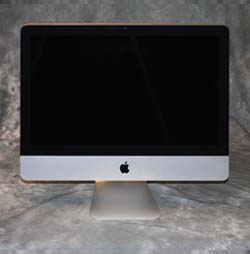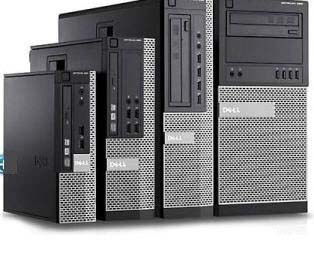2.1.2: Internal Components of the System Unit
- Page ID
- 10072
Learning Objectives
- Identify the common configurations of system units.
- Identify the key internal components of a system unit and describe the purpose of the internal components.
Common Configurations of System Units
All computers, regardless of size and power, are enclosed within a chassis, cabinet, or case. The case—what you see externally—and the computer itself comprise the system unit. This unit is the largest, most complex component of the personal computer (PC). It houses most of the hardware required to run the computer system. Because the system unit houses most of the components that operate and control the PC and allow users to complete their desired tasks, it is critical to ensure that the system unit fully meets your individual requirements.
We will focus our study on the system unit found in a personal computer typically used in a home. First, let's look at different configurations for system units. System units come in a variety of shapes and sizes. Desktop PC system units do not vary much and are usually easy to identify. Some units, such as all-in-one units, sit on the desk itself. A tower or minitower is typically on the floor or a rack beside the desk.
Workstations and mainframes are not considered PCs because of their size and weight. The images below show examples of several types of desktop PC system units.
Types of Desktop PC System Units

CC-BY by Janet Zimmer.
An all-in-one desktop unit. The system unit and speakers are enclosed in the same case as the monitor. The keyboard is a separate, external peripheral attached by either USB, wireless or Blue-tooth connection.

© Dell
This view of the Dell Optiplex 990 shows four different configurations for system units. From left to right: the ultra small form factor, the small form factor, the desktop, and the minitower. The heights range from 9 to 14 inches; weights vary from 7 to 20 pounds.
Students, and users in general, often have trouble identifying the system unit in mobile PC systems such as notebooks/laptops and tablet PCs, and in mobile devices such as handheld computers and smartphones. This is because, in contrast to typical desktop PC systems, these devices are all-in-one units where the system unit cannot be easily distinguished from the external peripherals such as the keyboard and the monitor (screen or display). For example, notebooks, handhelds, and tablet PCs house the system unit under the keyboards and pointing devices. Smartphones integrate these peripherals into the system unit.
The images below show where the system unit is typically located on mobile PC systems and mobile devices.
| Locations of System Units in Notebooks, Tablet PCs, and Smartphones | ||||
|---|---|---|---|---|
|
Did I Get This \(\PageIndex{1}\)?
Add exercises text here.
- Answer
-
Add texts here. Do not delete this text first.
Internal Components of the System Unit
Because the PC is an important part of our professional and personal lives, PC users benefit when they are able to identify key internal electronic components. The concept is similar to the level of understanding one should have to drive a car. Although you do not need to thoroughly understand the workings of your car's engine, understanding the purpose of the engine’s components and where they are located will help you better understand how it functions so that you can make good decisions when problems occur. The same is true of your computer. Knowing how its components are arranged and how they interact will allow you to make better-informed decisions about upgrading your PC or having it repaired. After looking at where these components may be located in the system unit, we will return to the list and expand the descriptions a bit more.
The complex electronic components required for operating and controlling the PC system, running programs, processing and storing data, and outputting information are located inside the system unit. Regardless of whether the system unit is in a desktop or mobile PC system, it will contain some of the same key internal components. This list outlines some of these common components and describes their purpose:
- a metal and/or plastic case (the chassis) to house and protect the internal electronic components
- internal bays and slots to hold the internal components in place
- internal circuitry and electrical channels (buses) that allow the electronic components to communicate
- external openings (bays) and ports to connect peripherals required to complete standard PC-related tasks and increase computing power and functionality
- lights and other indicators that the PC is on and communicating with external peripherals and networks
First, let’s look at the internal components.
The following interactive exercise is designed to help you properly identify and locate these key internal components of the system unit within a desktop PC. To identify components, move your mouse pointer over the name of the component or the image. Then click on each component to see a detailed view. In the detailed view, you will be able to rotate most components for a complete examination.
Lab Exercise
Internal Components of the Desktop System Unit
Because laptop owners are advised to let professionals make repairs to any laptop, most owners will never see the internal components of a laptop. The two photographs below show a laptop that has been opened to expose the motherboard and drive bays.
CC-BY by Janet Zimmer.
Using the photograph below, which is the reverse side of the same motherboard, can you identify where the system unit components are found on this laptop unit?

CC-BY by Janet Zimmer.
Other Internal Components
Although an exhaustive explanation of how the internal components work is not appropriate here, a bit more information about some of the components will be helpful to explain their functions.
Memory module. Your PC comes with memory modules installed. There are two types of memory you should be aware of: random access memory (RAM), and read-only memory (ROM). ROM is a form of nonvolatile (permanent) storage for instructions that the computer needs to boot up, or start. You cannot choose the amount or the contents of ROM. RAM is a type of memory that temporarily stores data before it is processed and sent to your screen or printer. This memory is volatile, which means the data or information stored there disappears when the computer is turned off or loses power.
When purchasing your computer, you can opt to include additional RAM. Why would you want to? For one thing, the more storage capacity available to the processor, the more quickly tasks can be completed. In addition, the memory requirements of modern operating systems require considerable RAM. It is recommended that even a home user should have a minimum of 4 gigabytes of RAM available.
Title
A byte holds one character (letter, number, symbol, etc.). A megabyte holds 1,048,576 characters. A gigabyte holds more than 1 billion characters, and a terabyte holds more than 1 trillion characters.
Do not confuse these memory modules with the hard drive that comes with your PC. Hard drives can develop problems involving the loss of data and should therefore be backed up, but their purpose is to store data even when the computer is turned off. RAM, by contrast, never stores data when the power is off and is designed to be the primary work area of a computer while data is being processed. It is usually referred to as memory or primary memory; sometimes disk storage is referred to as secondary memory.
Central processing unit (CPU). This is the component that does the computer’s main work of accepting data and converting it to information. It is often referred to as the “chip.” The CPU consists of two parts: the control unit (CU) and the arithmetic logic unit (ALU). The control unit does as its name indicates: it retrieves the instructions and the raw data that are submitted as input and coordinates or controls the sending of those instructions and data to the ALU. The ALU does the actual processing of the data, from mathematical calculations and logical operations (comparing values that can be numeric or alphabetical) to conversion of keyboard text entry to output display on your screen. Most PCs now come with multiple CPUs installed (Intel calls these “core processors”). Again, why have multiple processors? To increase the speed at which the data can be converted to information!
When you have a single CPU or multiple CPUs, there is one other very important component: the system clock. This is not the clock that displays the time of day on your screen. It is an internal clock that controls the speed at which instructions are retrieved and processed in the computer. The system clock uses a quartz crystal to maintain precisely regulated time. Computers manufacturers list processing speed in terms of megahertz (MHz), millions of processes per second, or gigahertz (GHz), billions of processes per second. Modern PCs now come with processing speeds in gigahertz only; the larger the GHz rating, the more responsive the computer will be. A 2-GHz speed is fairly standard, but you can purchase faster chips if you are playing video games or using some other programs in which very small delays can matter. The faster the speed, of course, the more expensive the chip is to purchase.
Because the responsiveness of your PC does not rely on just one of the above components, it is misleading to say, for instance, that a CPU with a processor speed (system clock speed) of 2 GHz is faster than one labeled with a 1-GHz speed. Having multiple processors working simultaneously in the CPU—dual, quad, sometimes even six or more—will increase processing output in spite of a slower clock speed. Another critical component is the amount of RAM that can adequately store the data as it is being processed. Even the way the electrical circuits are wired can impact responsiveness.
So what rule of thumb should you apply when purchasing a new computer? Based upon your budget, spend as much as you can on memory, and buy the fastest processor you can afford.
Example \(\PageIndex{1}\)
Rita needs a computer for doing schoolwork, storing family pictures from her digital camera, and going online to connect with friends. She comes to you with a description of a computer system that she found in a newspaper ad. The computer is described as having:
- 1.6GHz dual-core processor
- 3 USB ports
- expansion slots for memory stick (camera)
- 1GB memory
- 10.1" screen
- 320GB hard drive
- expansion slots for internet access card
The price listed in the ad is $300. Will this computer satisfy Rita’s needs for school use, for storing her family pictures that are currently on her digital camera, and for connecting with her friends who have encouraged her to join Facebook?
The price is tempting! But the processor, even though it is a dual-core processor, may be annoyingly slow. Plus, the amount of RAM is minimal, which means that some activities will take longer than expected. Both processor speed and amount of memory may affect the speed at which web pages can be viewed or information in files can be saved and retrieved.
The system Rita is considering can support transfer of pictures from a digital camera to the computer, and it has a relatively good-sized hard drive. The size of the monitor suggests this might be a mini laptop (small version of a standard laptop). The weight will make it easy to carry, but the screen size might not be comfortable for extended use.






